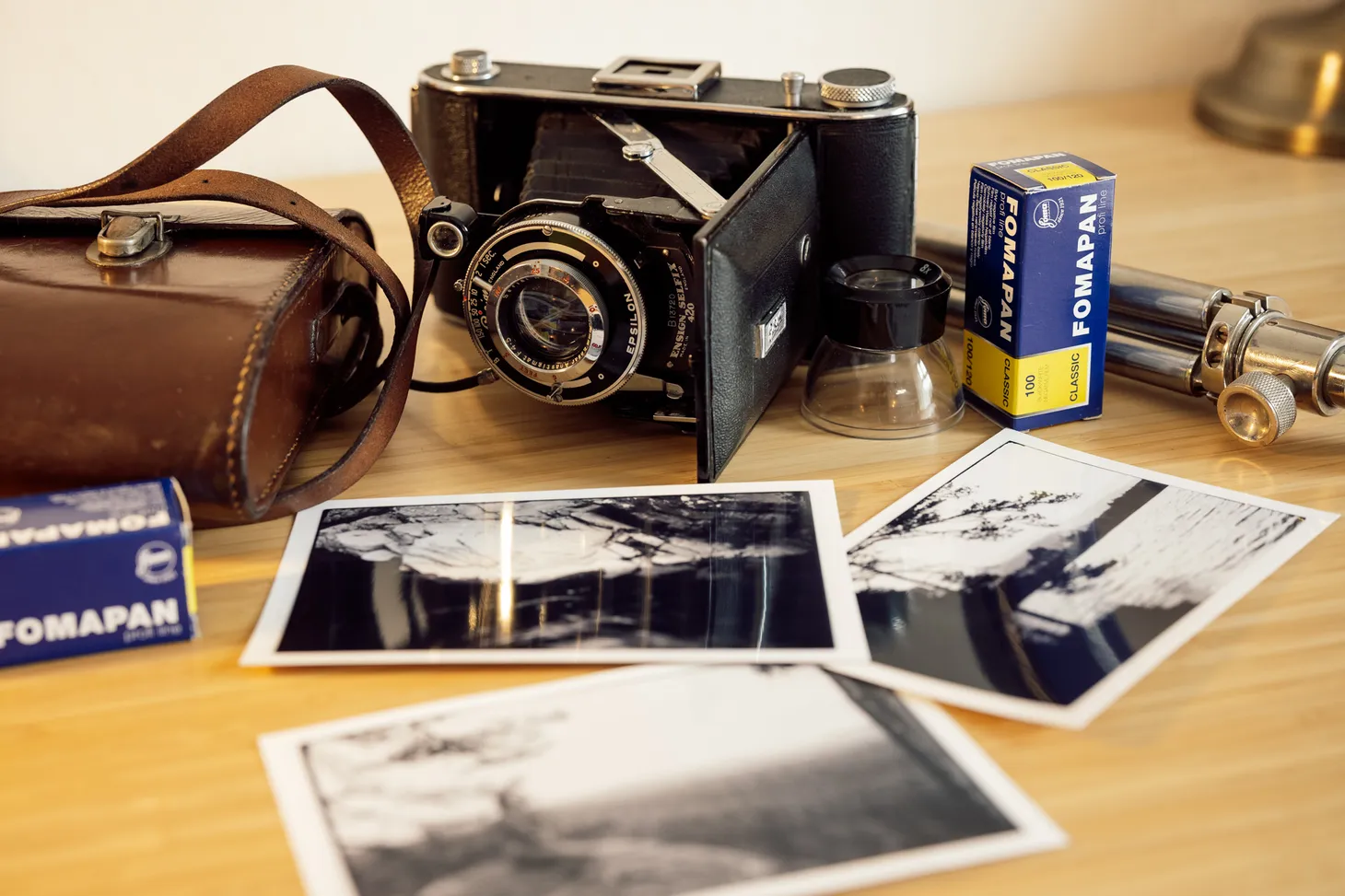Postcards from Morocco

In late June, I began the long journey from Scotland to Morocco. The goal: to hike the Toubkal Circuit, climb Toubkal itself, and then have further adventures amongst the 4,000m peaks of the Toubkal National Park.
This trip was planned and organised by my friend Emily Woodhouse, who is writing a Cicerone guidebook to trekking and mountaineering in Morocco and wanted some friends to come along on a research expedition. I've wanted to visit the Toubkal area for years, so said yes immediately, and volunteered to act as a supplementary photographer for the book. I also knew that I'd be able to write two or three magazine articles about the trip, so photography and journaling were always going to be key priorities for me. Other group members included Laura, Jo, and Rosie (none of whom I knew beforehand – all were Emily's friends).
Legally, all hikers in the Toubkal National Park must be accompanied by a qualified local guide. We hired Aztat Treks for the Toubkal Circuit and Toubkal itself, and teamed up with my friend Faiçal Bourkiba for the remainder. Emily and I worked with Faiçal last year for a Sidetracked feature about building a climbing culture in Morocco, so we jumped at the chance to meet him in person.
The stories yet to be written
My prior knowledge of the Toubkal area was limited. I'd read blog accounts of the Toubkal Circuit that seemed a bit dismal, warning of endless scree, barren mountains, hot temperatures, and poor light for photography. But reality is never the same as expectations (thankfully). By the second day of the Toubkal Circuit I'd figured out that this trip was going to be something truly special. By the time we reached the foot of Toubkal itself, ready for our ascent of Morocco's highest mountain, I was fully immersed in the adventure, and my opinion of the Circuit had risen to sky-high levels. 'This is probably the best trek of its length I've done,' I told Emily at the time in a burst of enthusiasm, 'although I often think my most recent trip is the best, and my opinion might change in a few weeks.'



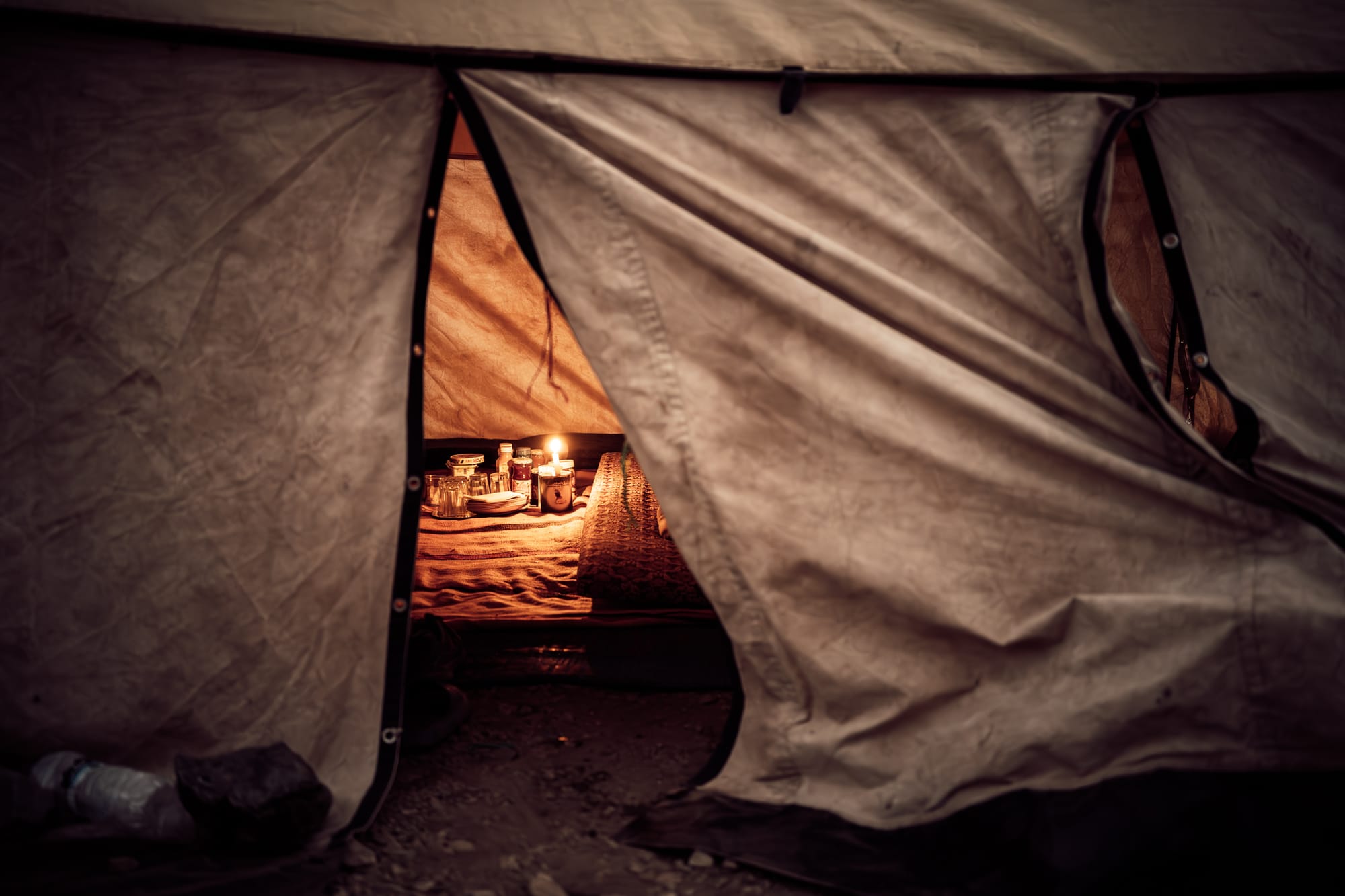
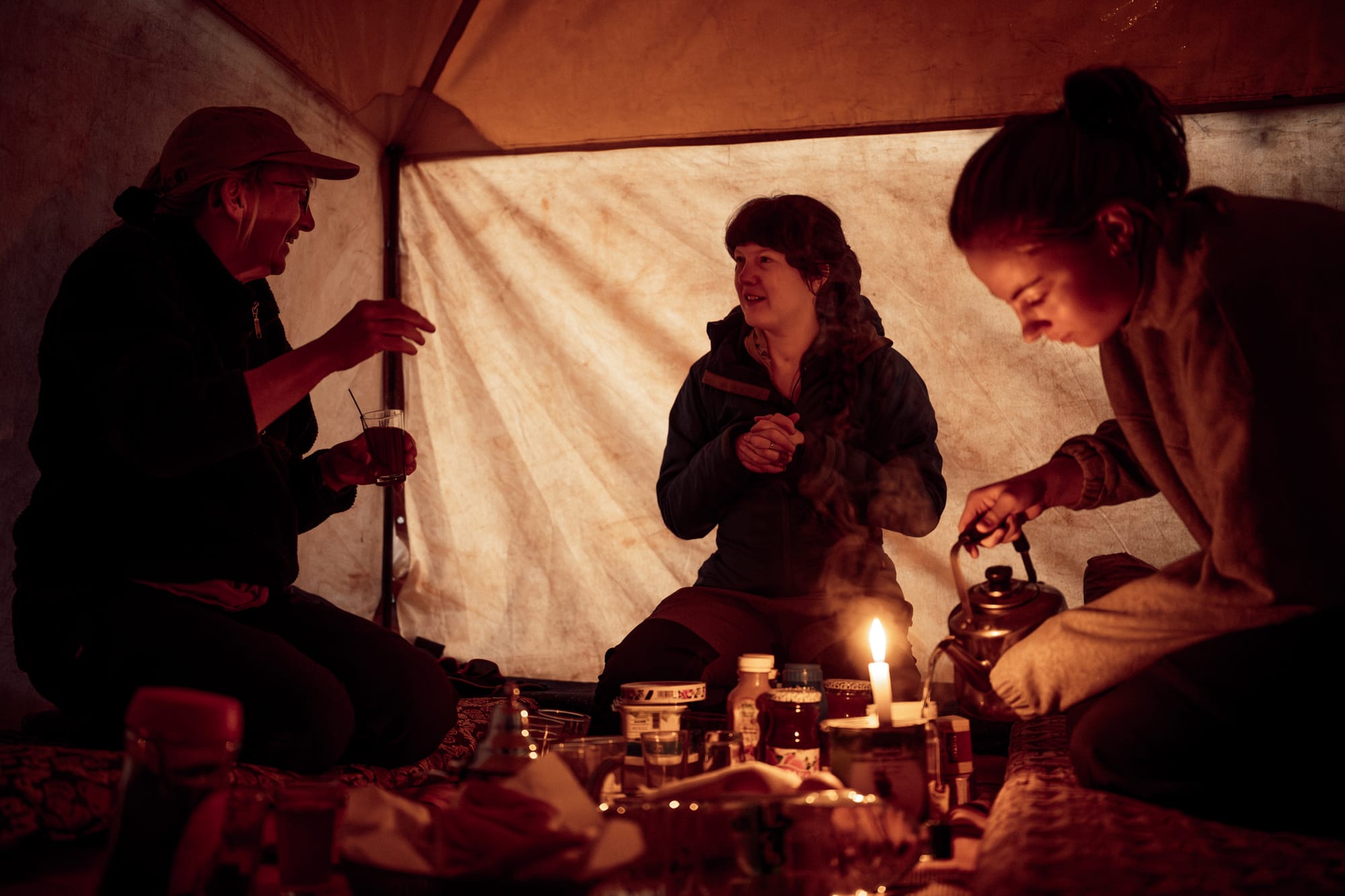
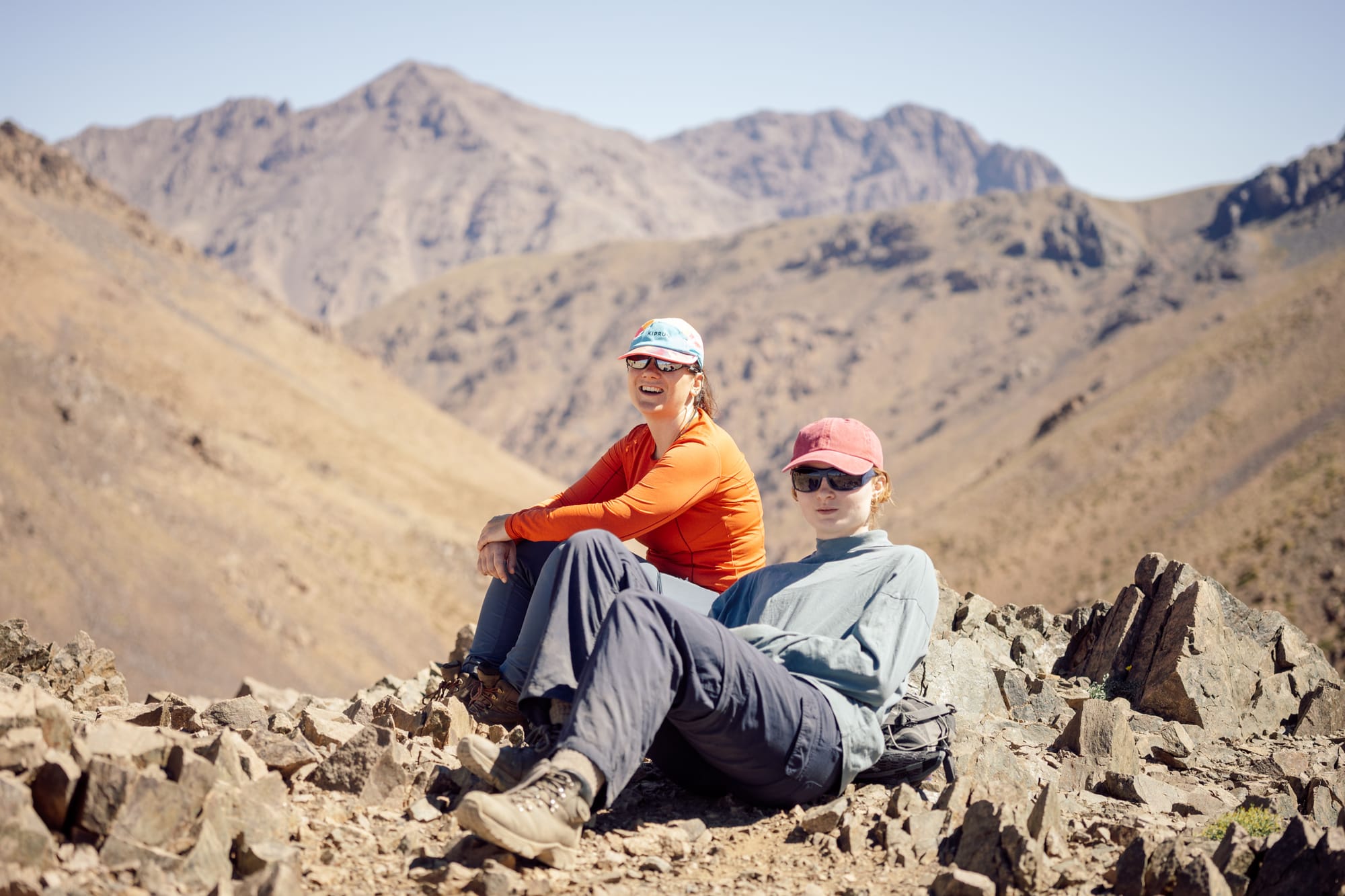
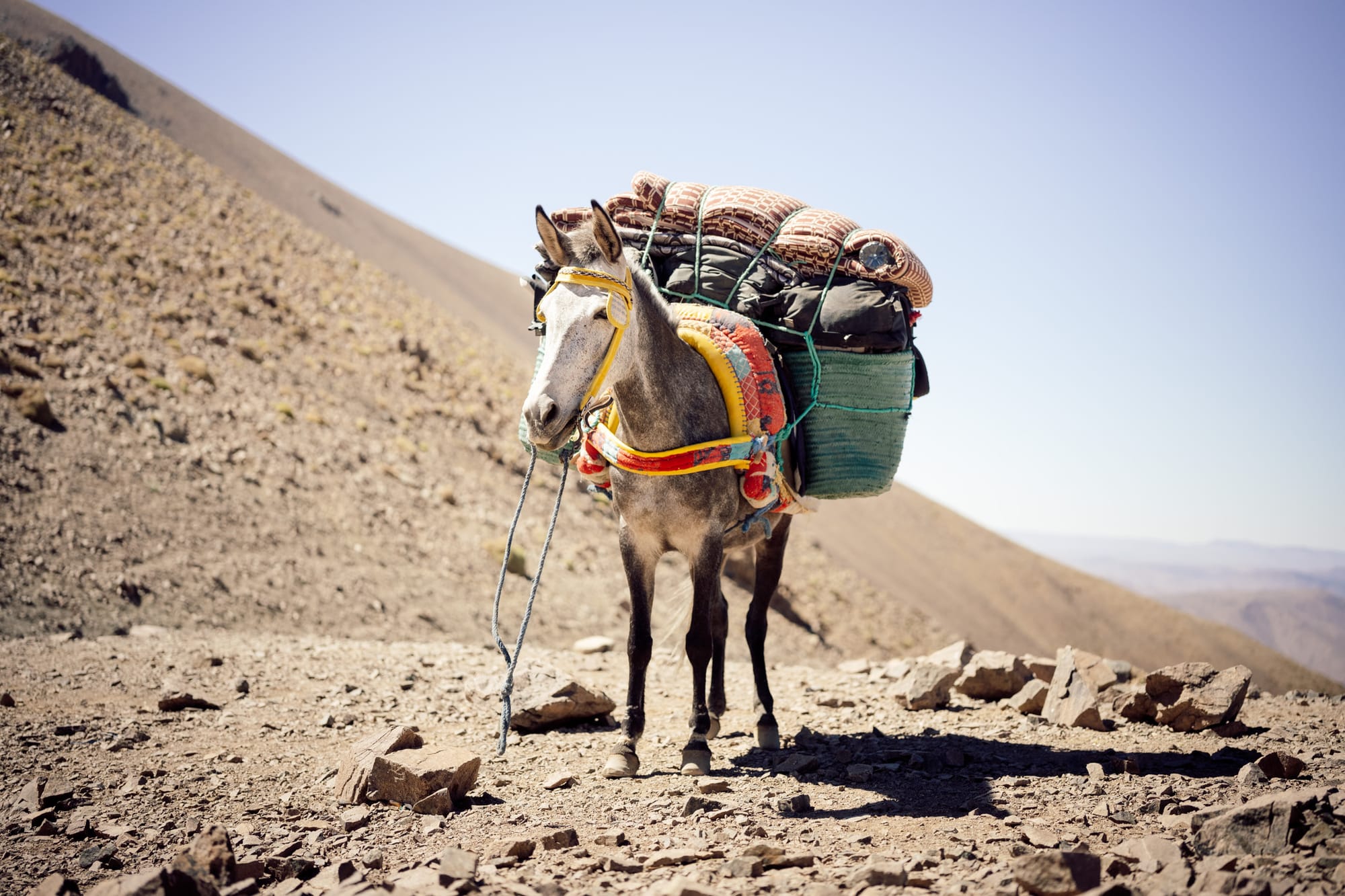
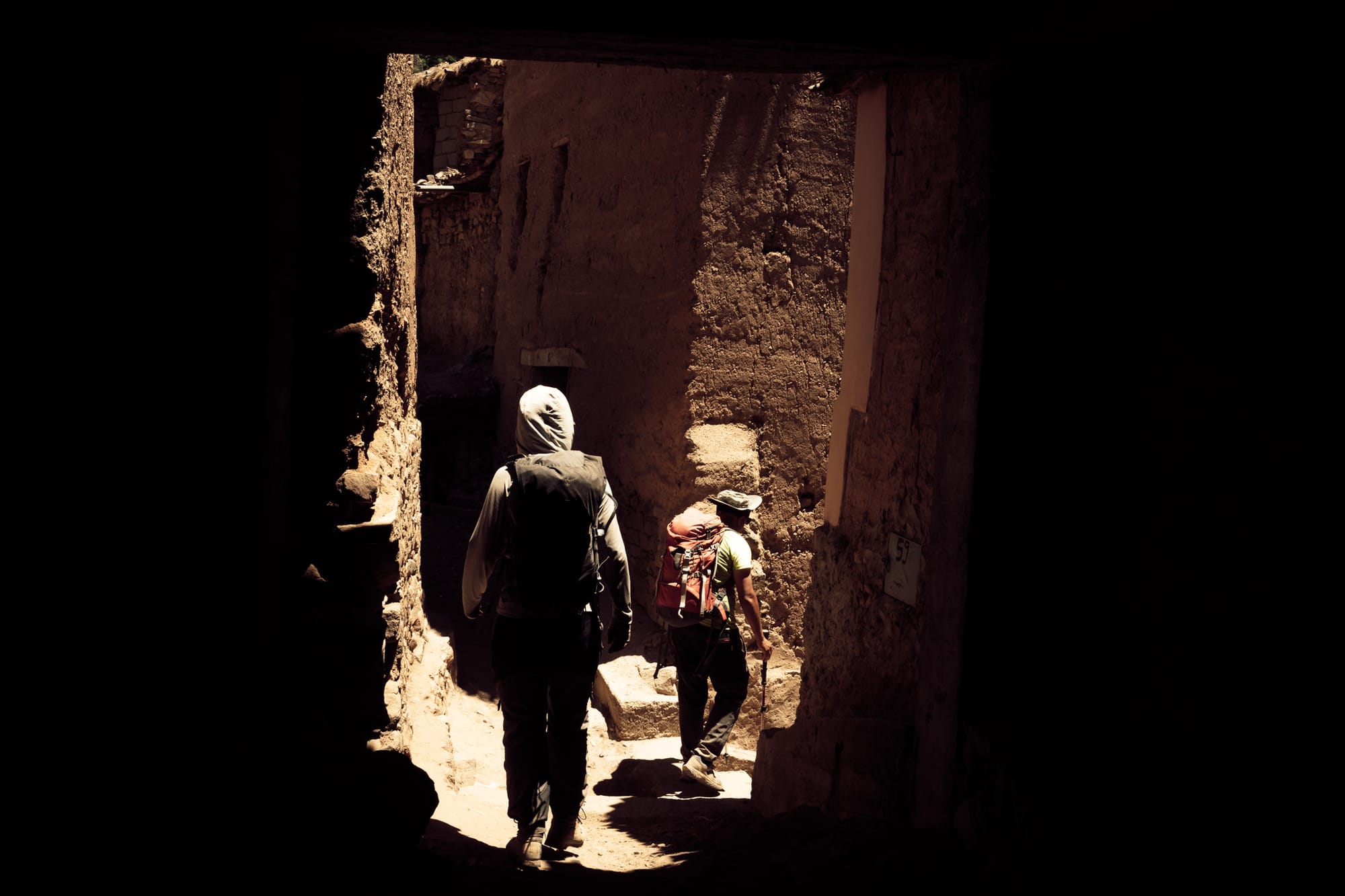
Just over a week later, as I look through photos and consolidate stories in my head, my opinion has yet to change. This trip was incredible in every way. Although the Toubkal Circuit can't beat the Pyrenean Haute Route or my 2022 trans-Alpine journey, those were 800-900km routes. No hike of less than 100km, however good, can compete with that, because there simply isn't enough time to fully ease back into my slower, richer trail headspace – and this (at least for me) is a key component of experiencing the mountains at their best. The mind is always too dull and too quick for the first fortnight. (It also takes about two weeks for hiker hunger to fully kick in; unsure if there's any correlation.)
However, I'll say this. Morocco did a better job of getting me closer to this headspace than any other 10-day trip in my life. A very special combination of grand adventure, fine food, exceptional company, a new culture to learn about and explore, Type-2 fun, and a kind and generous people made this trip highly distinctive. Most obviously, this was also my first time outside Europe (I know, I know). And travelling with an inquisitive mind is a certain way to thin the veil.
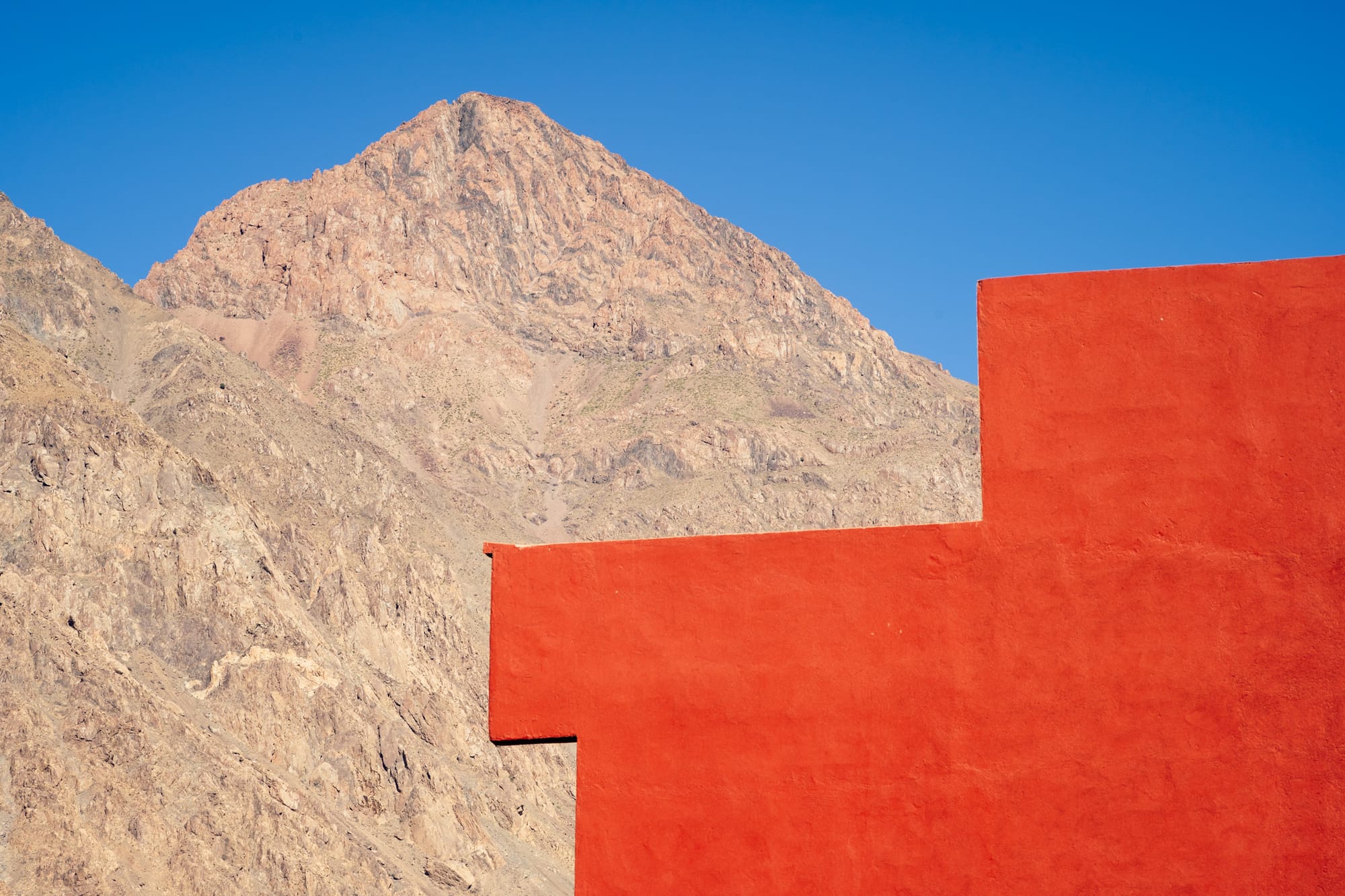
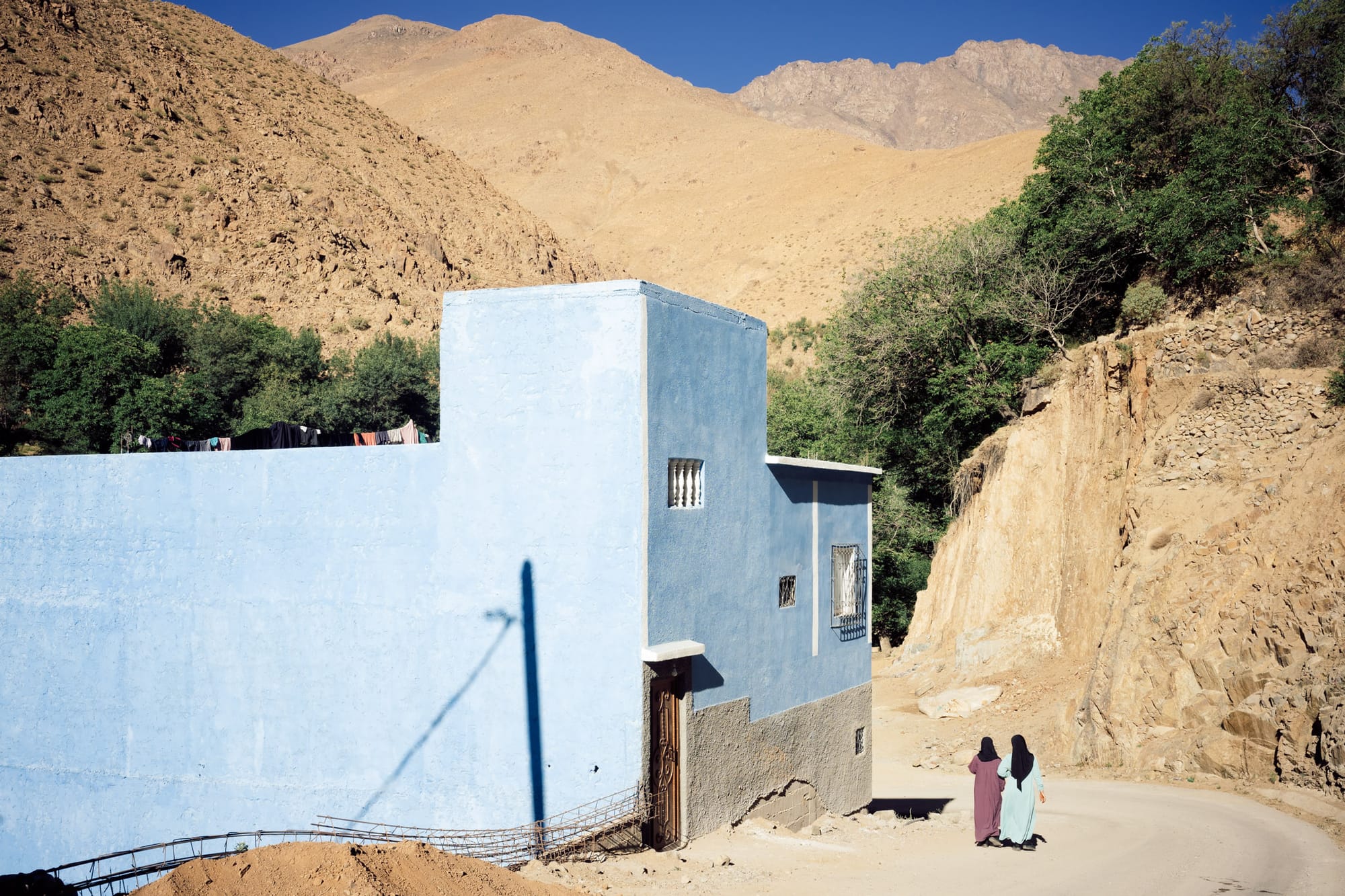
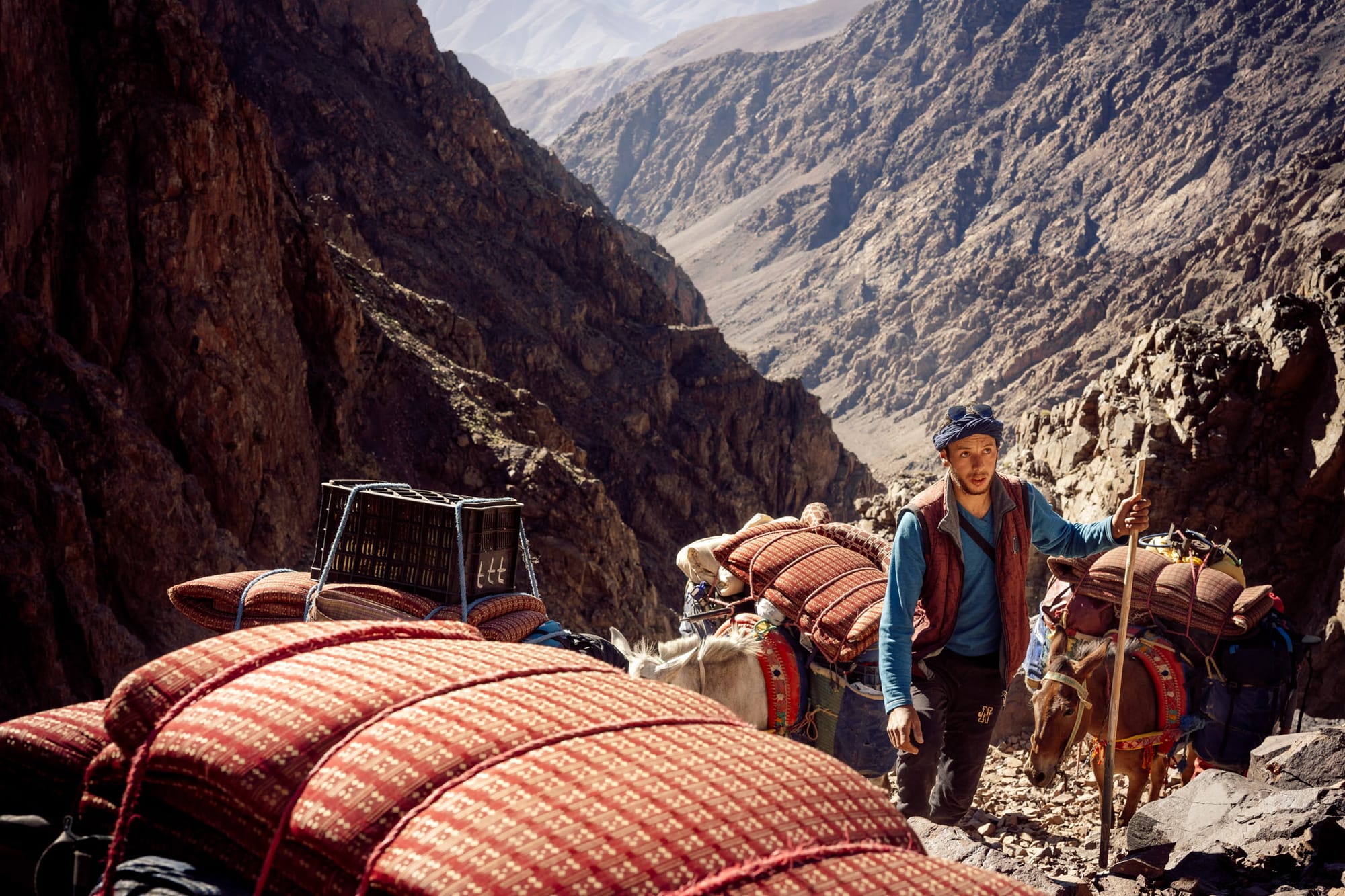
I won't go into all of our incredible adventures and stories here – there are simply too many to recount, and besides, I'm keeping my powder dry for magazine articles. I won't tell you about Piper the freelance mountain dog, or The Big Adventure (including Choss Central, Grand Choss Central, and Sketchy McSketchface), or our friendly rivalry with a group of uni students, or Bugatti Steve, or the silly stories we made up while hiking. I won't write down the long and lovely evening outside Tazarhart Refuge with Faiçal, Emily and Laura, drinking mint tea and chatting while the light turned golden behind the mountains. I won't attempt to describe how it felt to climb my first clutch of 4,000m peaks since I was 22 years old. I won't write about the pristine rippled dunes of gravel we found on the summit of Afella, or the mysterious serpents of Lake Ifni. I won't even try to put down my ever-evolving feelings about the importance and intensity of mountain friendships. Not here. But I will write about all of these things in the proper place and time.
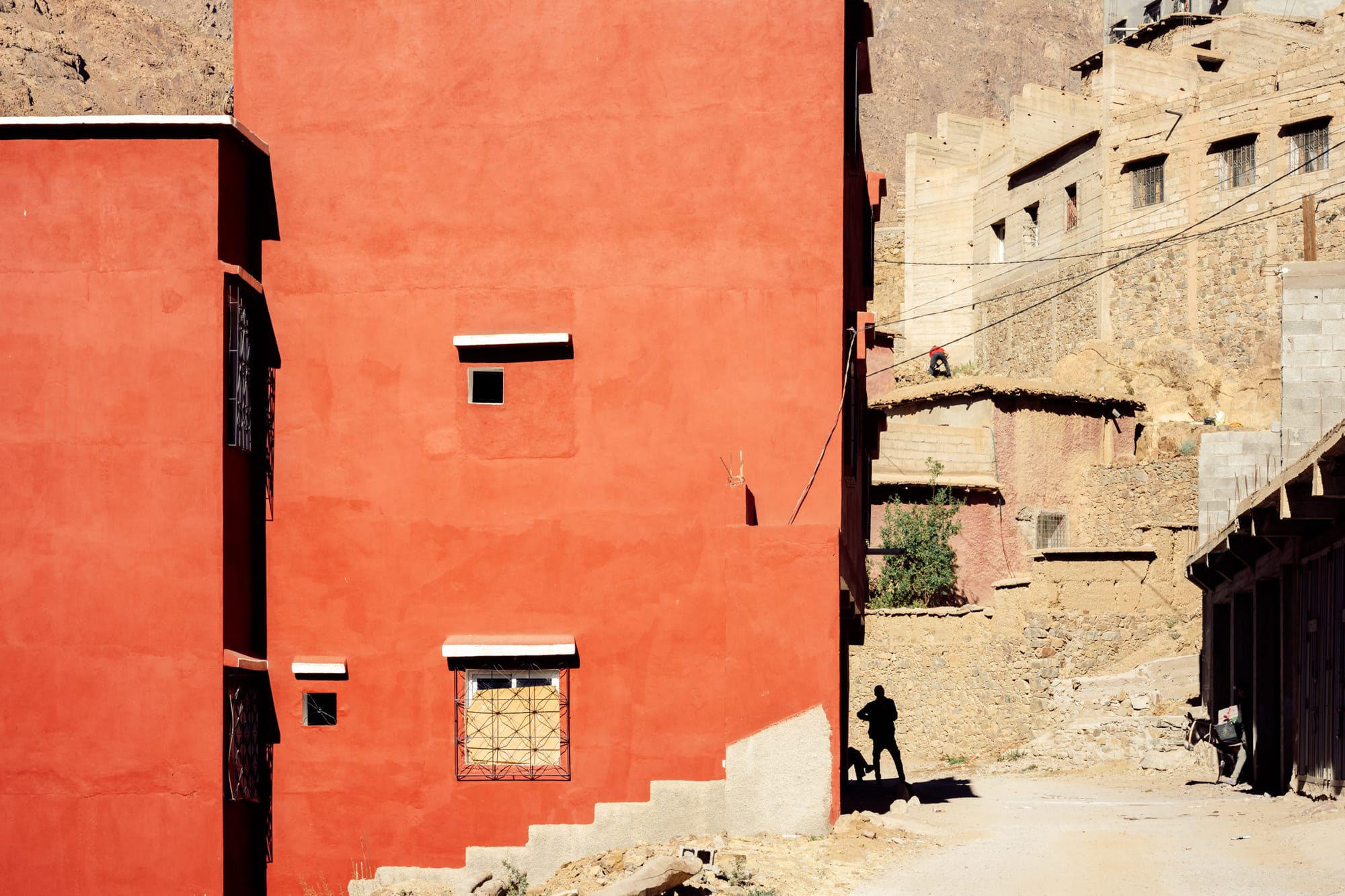
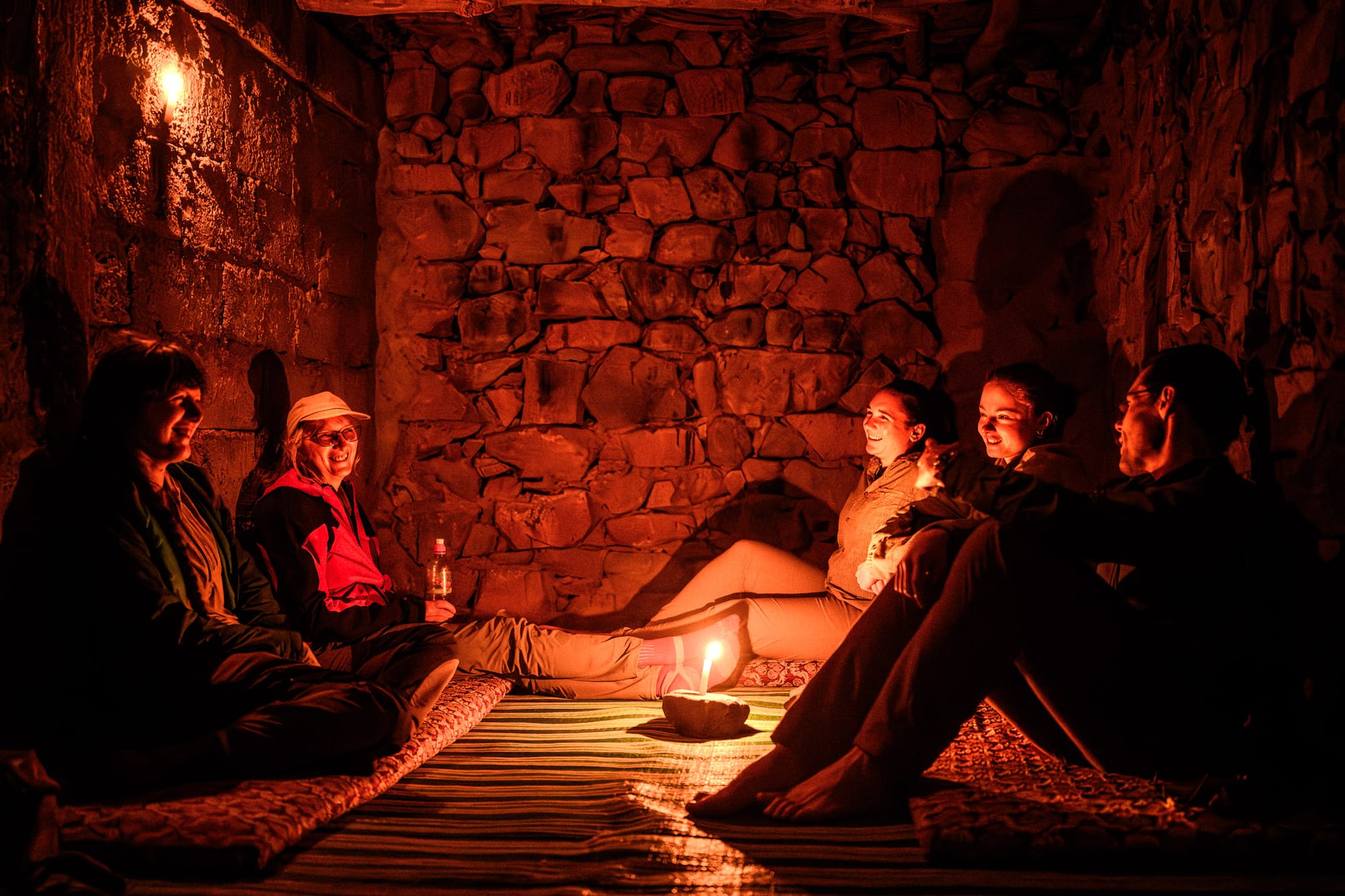
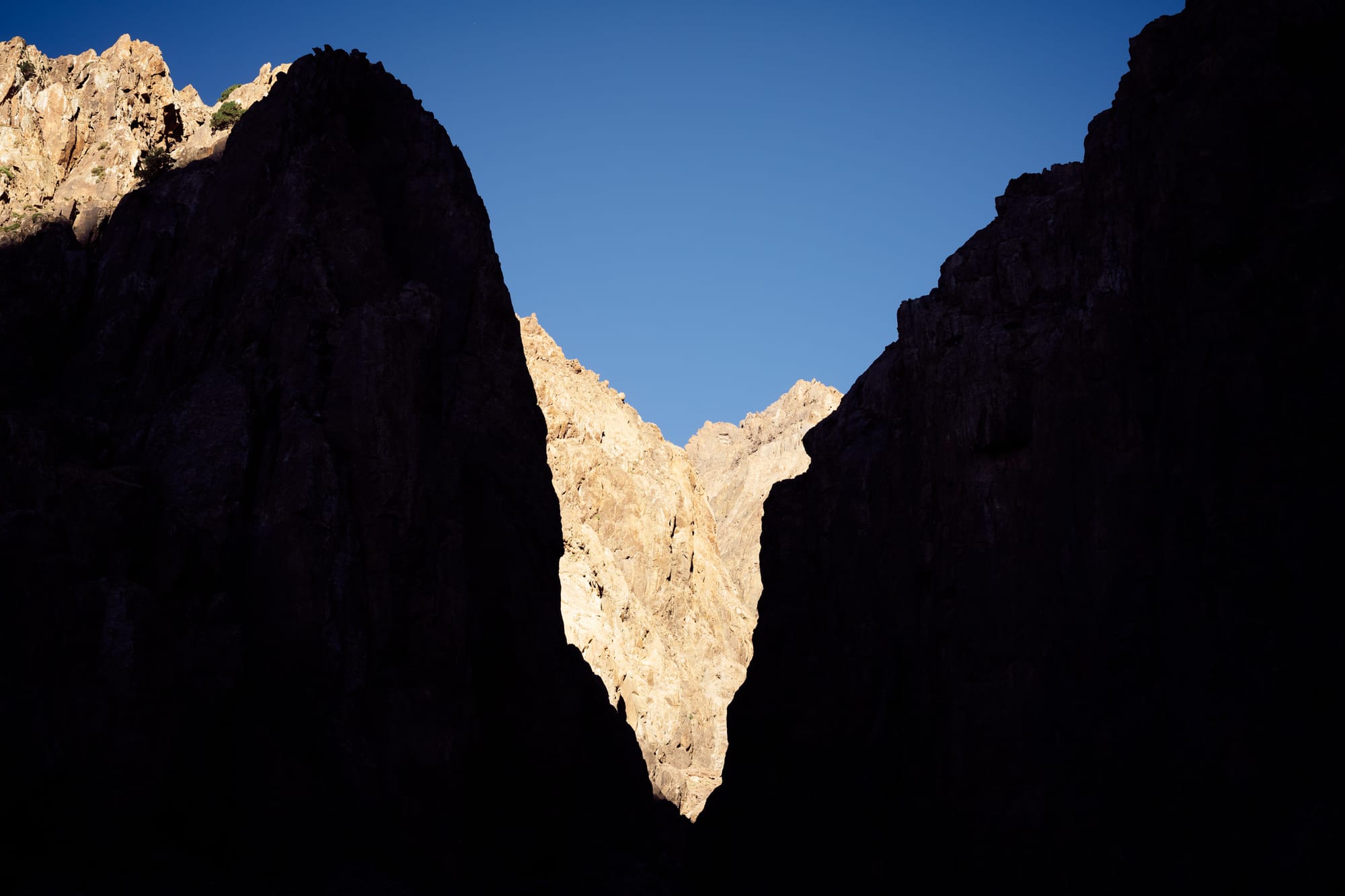
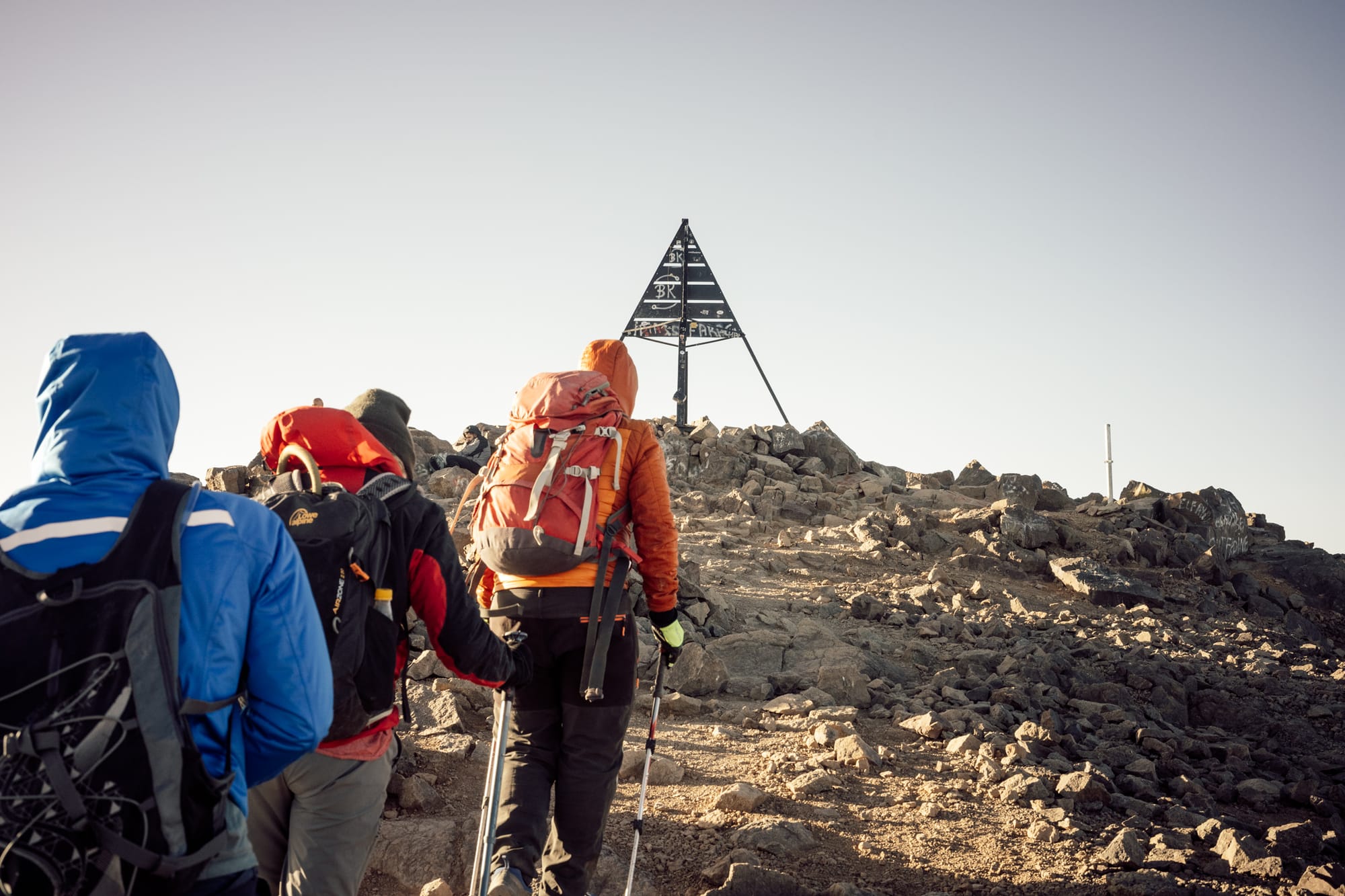
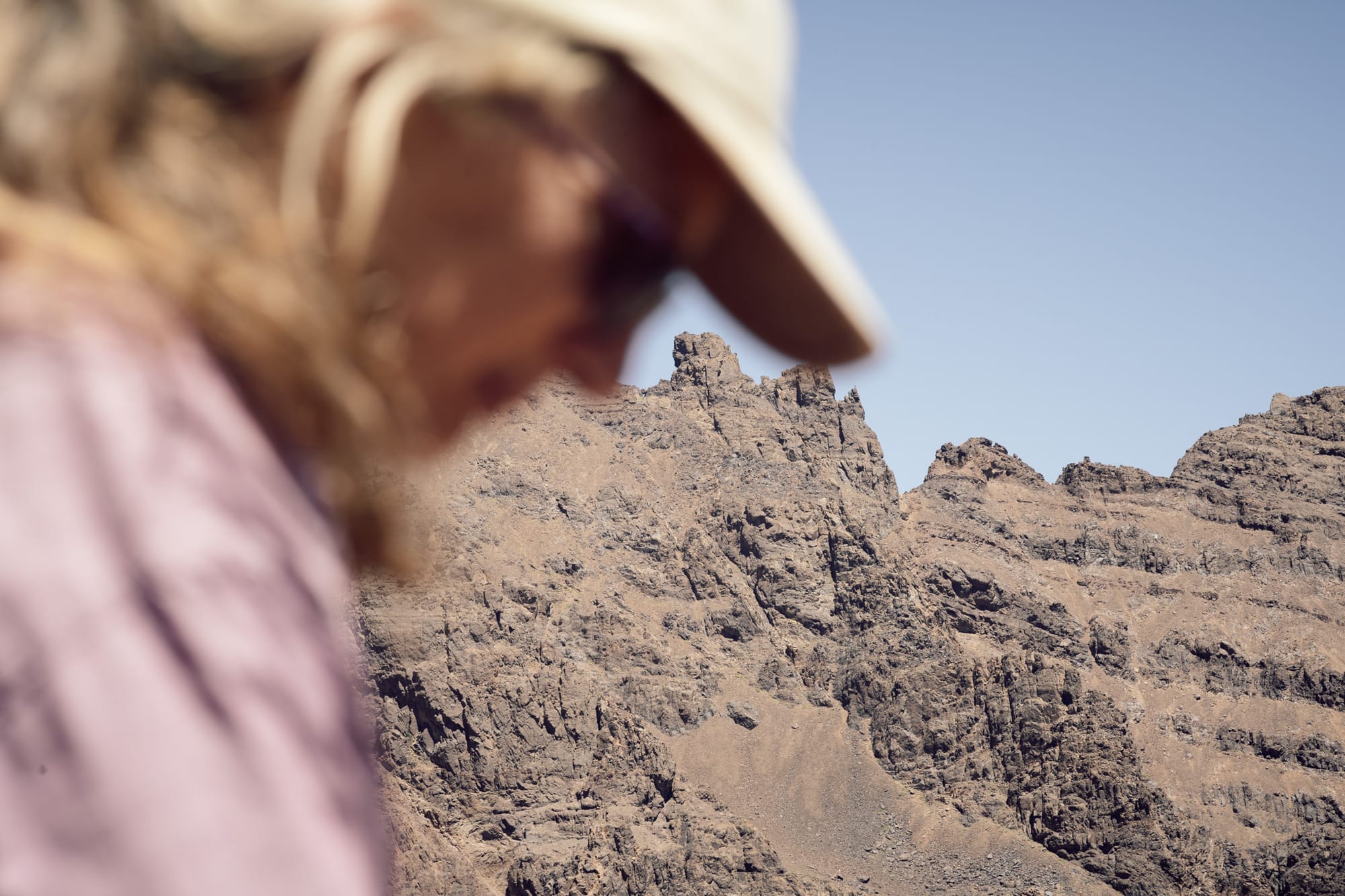
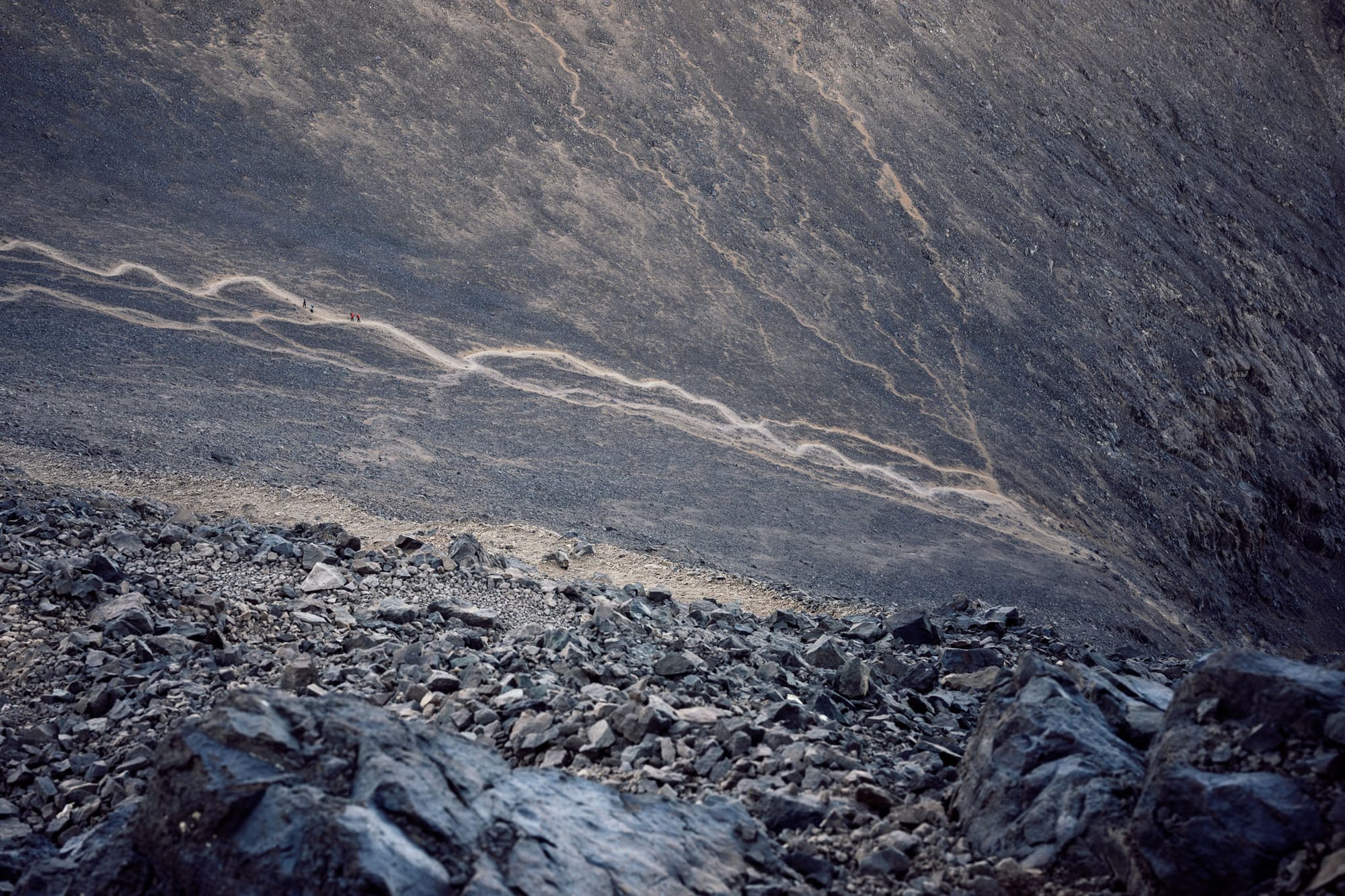

The Lightroom dance – and more opinionated navel-gazing about cameras
Right now, I'm neck-deep in image processing in Lightroom. I came back with around 1,600 frames on my Nikon Zf. That's an intimidating number of photos for a primarily film shooter who thinks in multiples of 36-frame cans. I've written before about how my keeper rate with digital photography is always lousy, and that was definitely the case here; if shooting film I'd have come back with a third the number of frames but the same number of keepers. But I chickened out of travelling with film this time, worried that the airport CT scanners would fry it. Ah well.
However, much as I love analogue photography, I think the long haul in Lightroom working on my digital processing workflow has really improved my eye for colour over the years. I like to seek out unified – but simple – palettes. In Morocco, the palette I found consisted of tans, blues, rich oranges, punchy blacks, and islands of green. Time in Lightroom helps to surface these visual themes both in the field and in the culling process.
I'm gradually culling down the enormous pile of digital images and arriving at a coherent collection. Some of these shots are, I believe, among my best from the last few years.
Part of the reason for this was my approach – a hybrid between digital and analogue. Although the Nikon Zf is a modern full-frame digital camera, it's a member of a new breed of cameras that have (thankfully) gone back to a classic control layout, with traditional ISO and shutter-speed dials on the top plate. I paired the Zf with fully manual 35mm, 50mm, and 135mm lenses. No autofocus or automatic exposure modes were wanted or needed at any stage. I didn't miss focus or mess up exposure once.
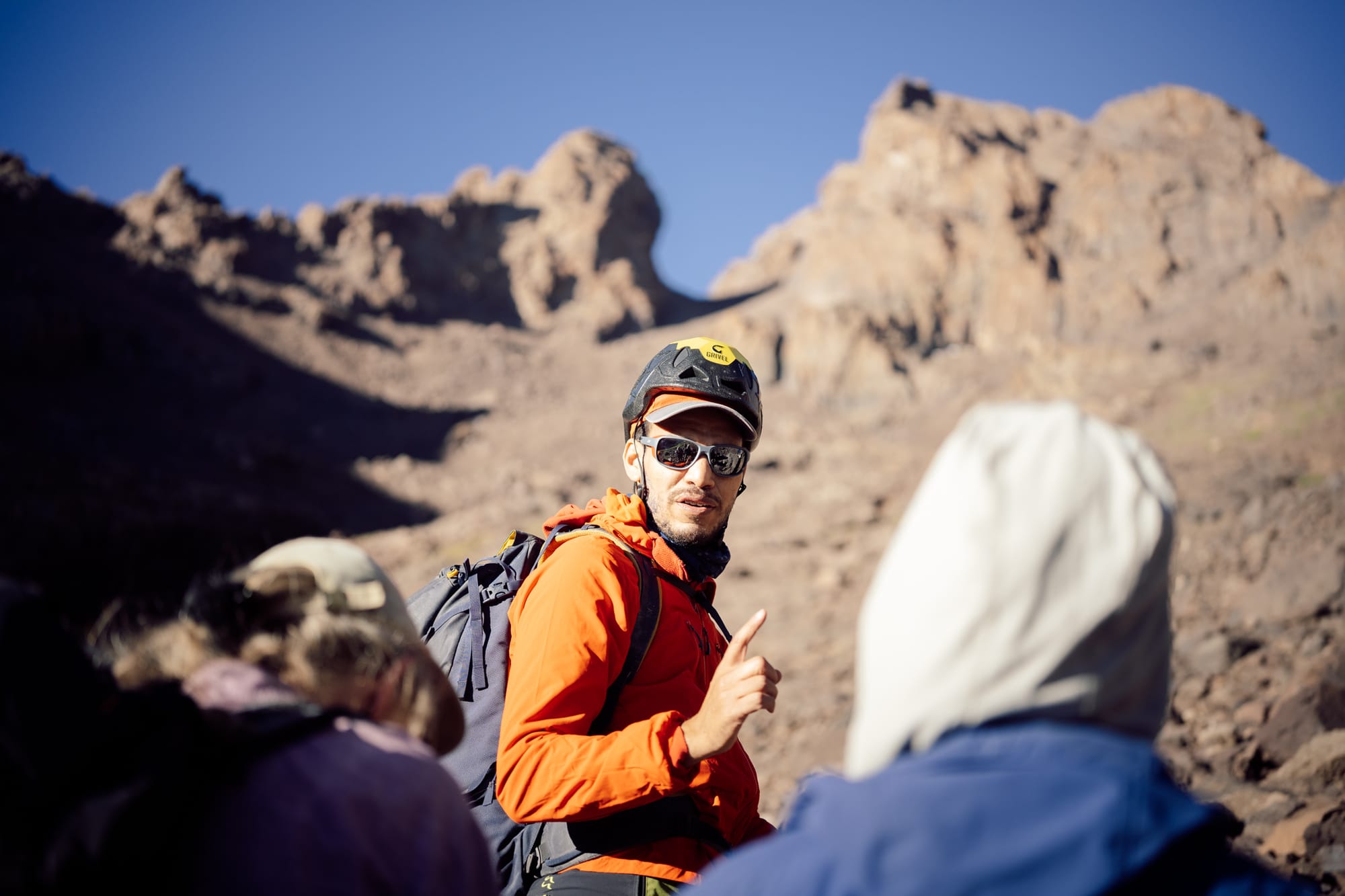
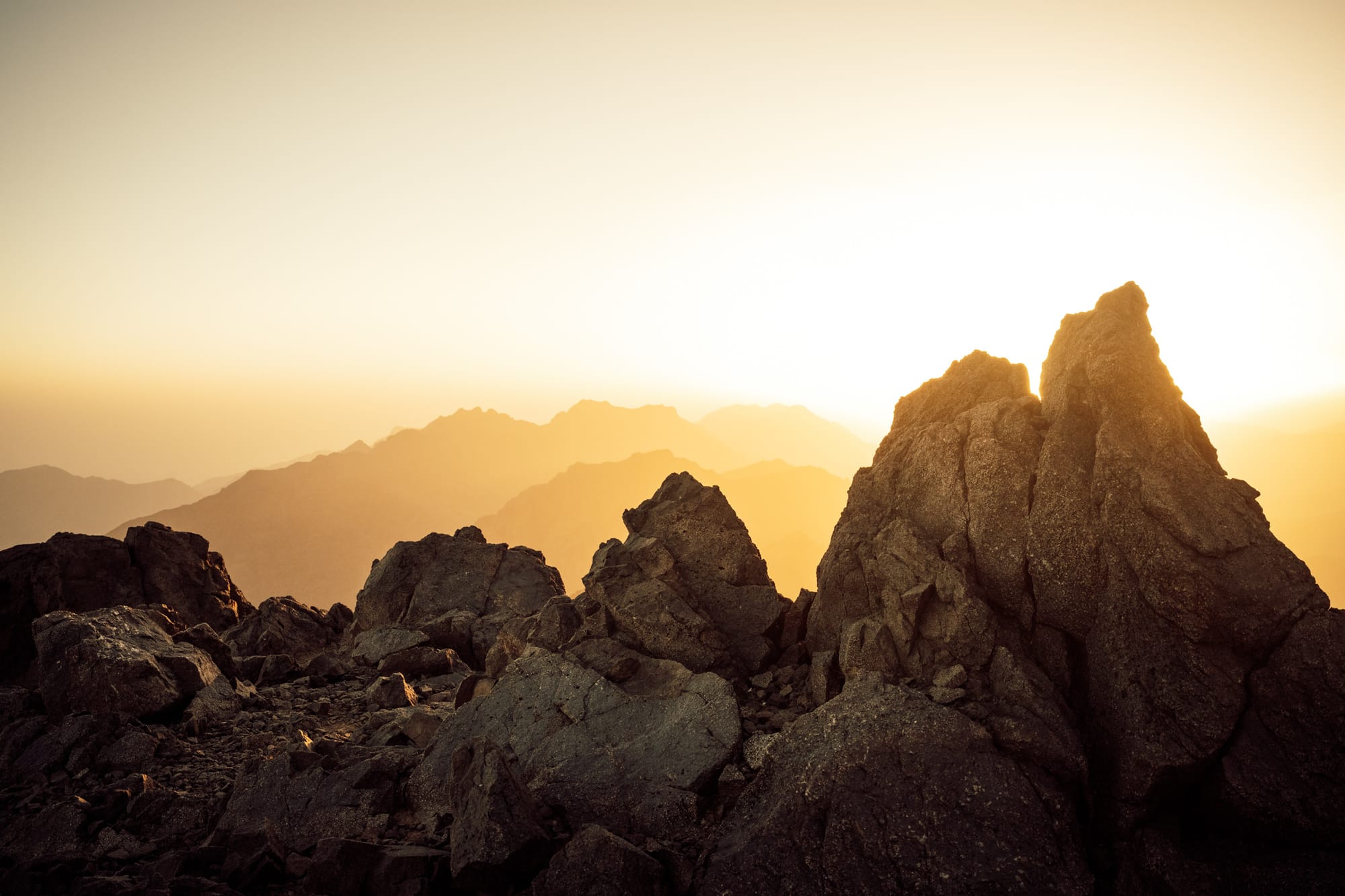
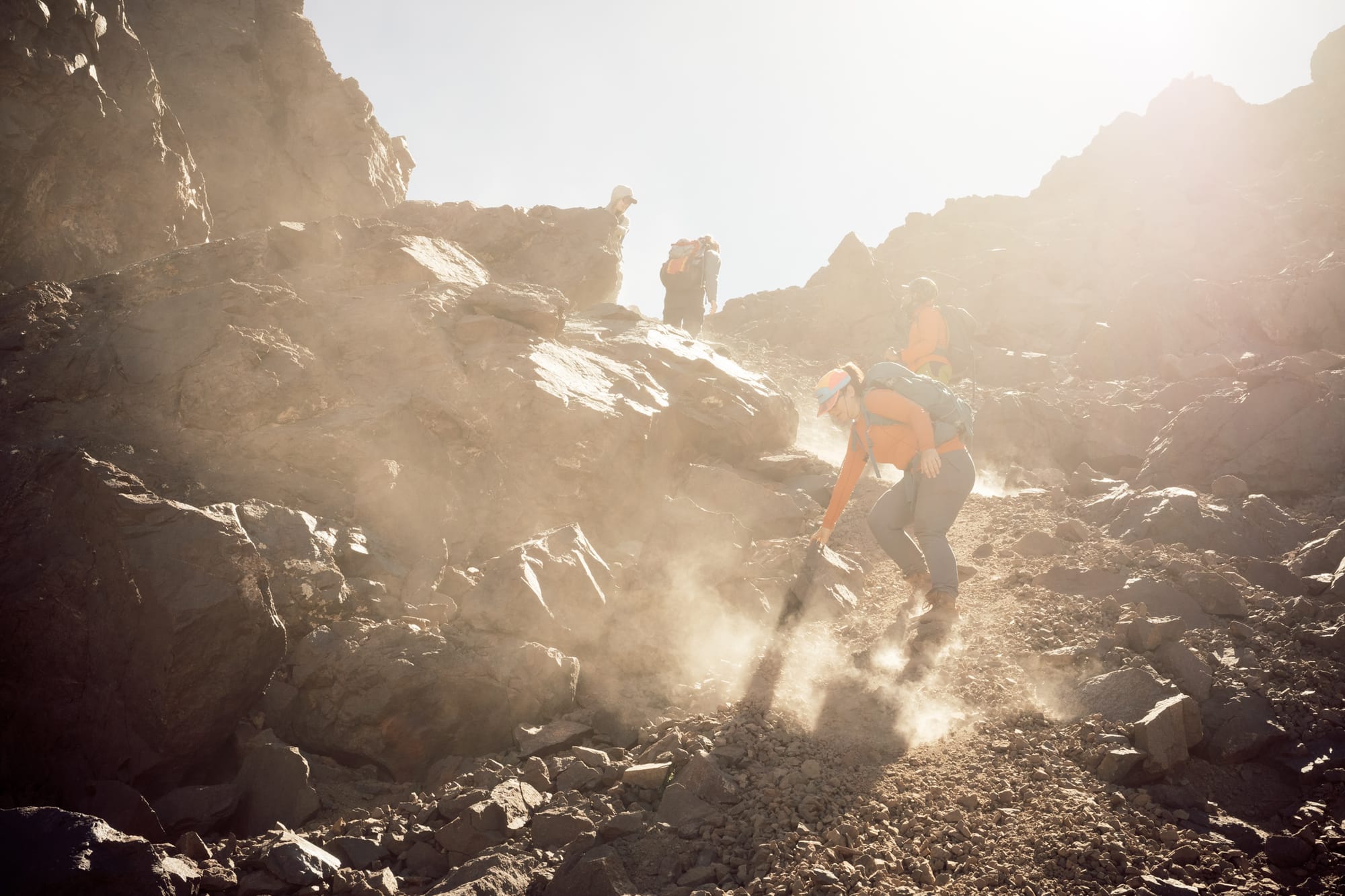
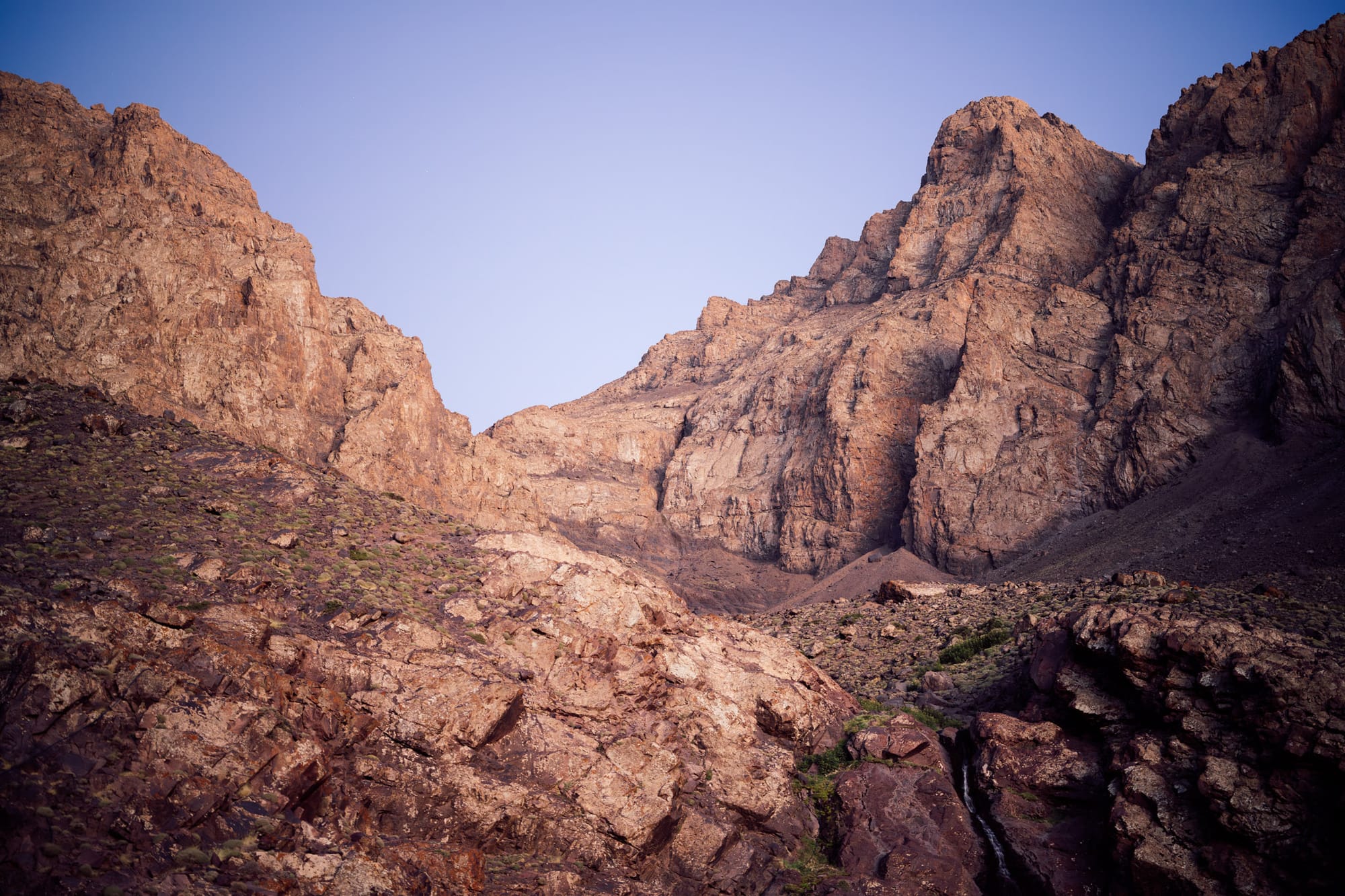
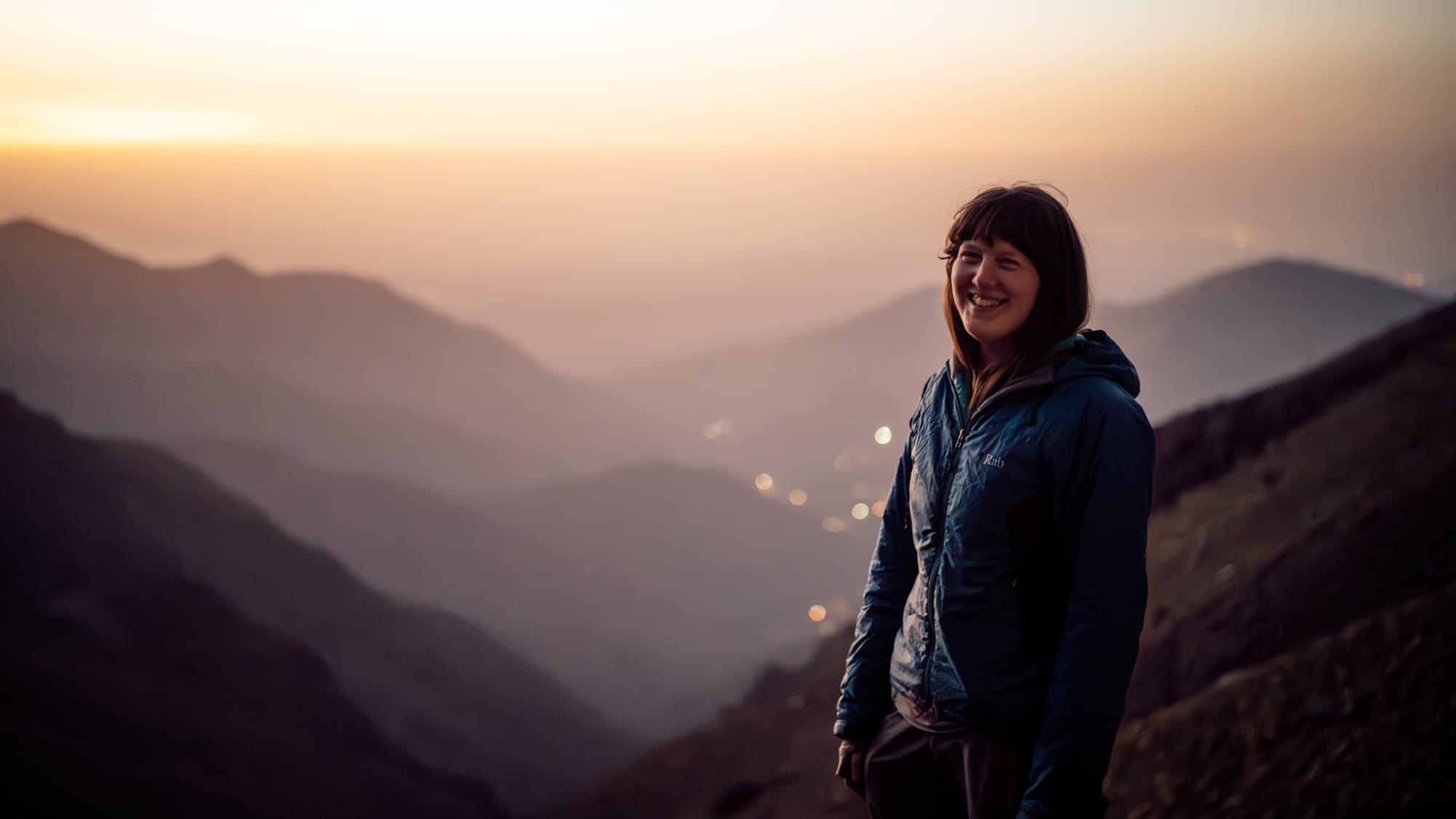
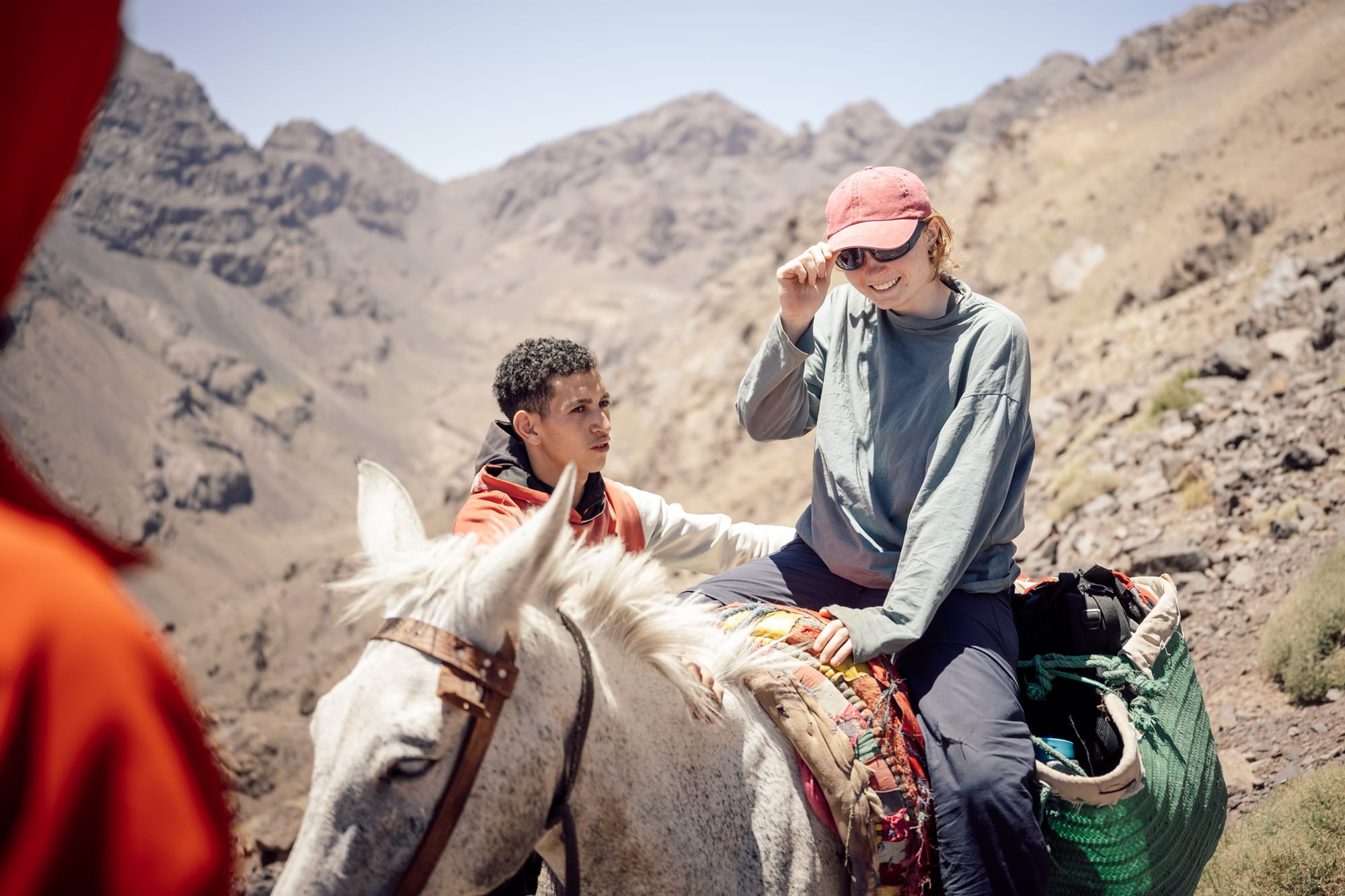
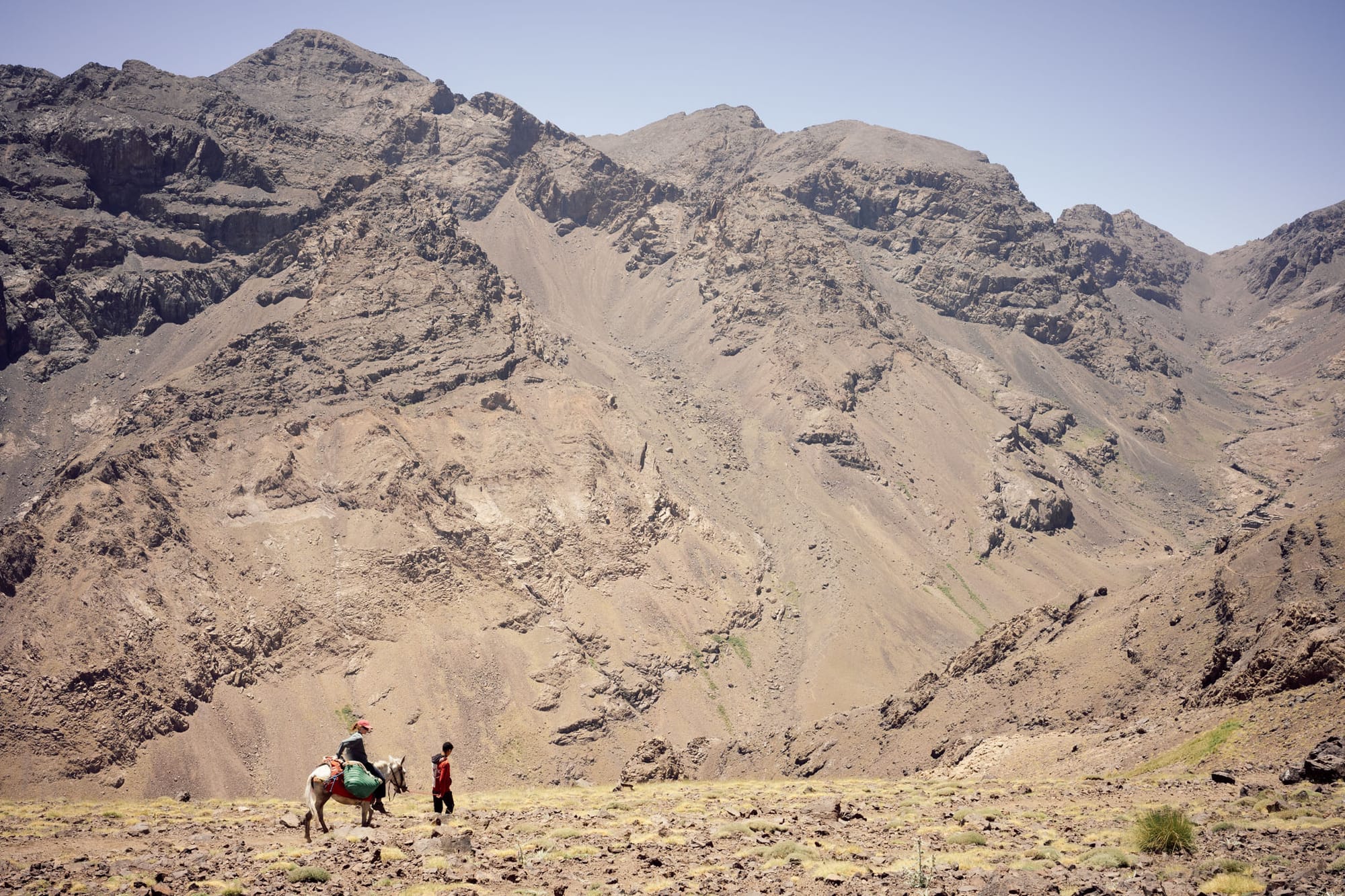
One of the learning processes I've been on over the last few years is the particular way in which my brain works. I've long been aware that I respond to things in a different way to most people. I can be very particular, some might say inflexible or awkward, about some things, and have to make allowances – in some cases elaborate coping mechanisms – for ways in which my brain doesn't work how I want it to. (Eventually I will figure out if there is a label for all this, and if so, whether that's helpful.)
Anyway, my point is that sometimes this can be a superpower. I think I’ve reached the point as a photographer where automation is an active hindrance to creativity and speed. My brain works best when it's fully engaged with a creative process from top to bottom.
In photography, this means having the camera already set to the correct exposure settings and zone focus before I raise it to my eye. I don't want the camera making decisions for me about exposure or focusing. Experience and skill and creativity, not fussy, clumsy automation (I'm of the belief that all digital automation is fussy and clumsy). As I wrote late last year, 'transparent, simple tools thin the veil and lighten the mind.' The Nikon Zf is still a computer, and is not an 'elegant weapon for a more civilised age' like my manual film cameras, but it gets a lot closer than most other things from the digital era. I'm pleased that modern camera design is gradually swinging back towards more enlightened principles.
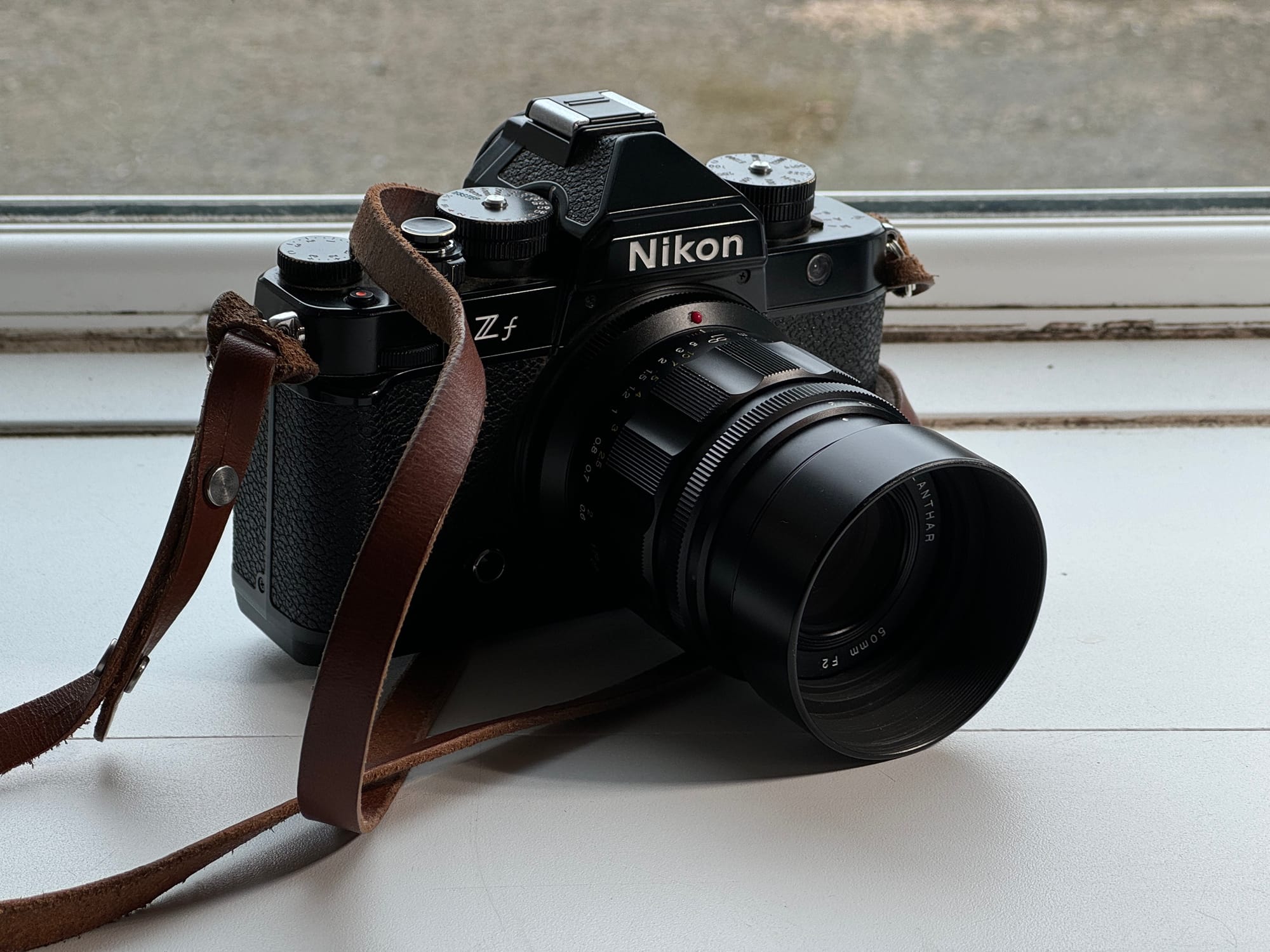
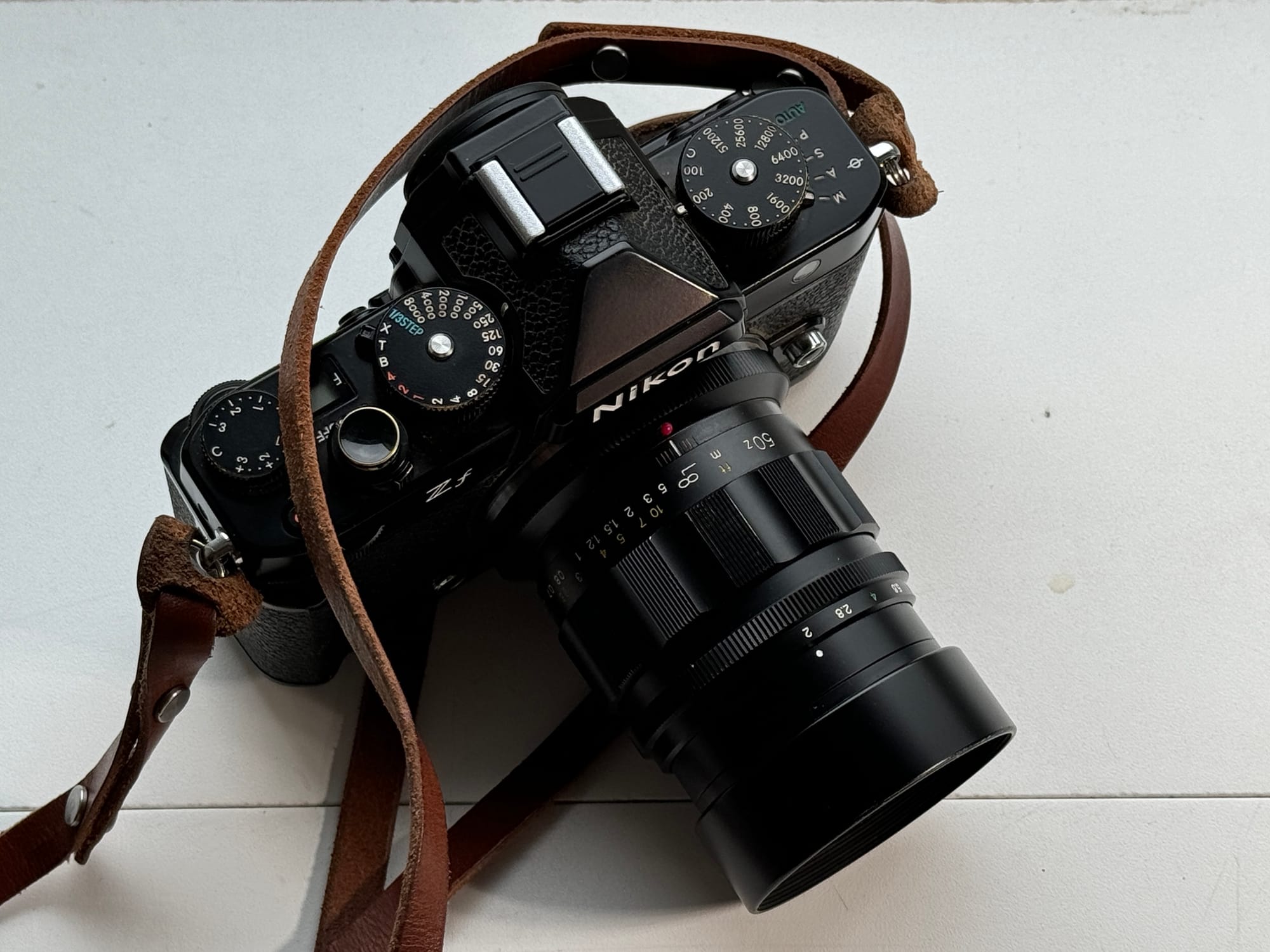
Nikon Zf with Voigtlander 50mm f/2 APO-Lanthar: a modern camera system from 2024, not 1974 as you might assume from its appearance. This setup performed superbly in Morocco
Process is a critical part of art, but the photos are what really matter, and I am delighted by the pictures I've edited so far. I'm looking forward to gradually publishing them over the next year or so – in magazines, in books, and in my own online writings. Speaking of which... have you subscribed to my Substack yet? I'll be launching a new online publication called Alpenglow Journal in the next few weeks.
All images © Alex Roddie. All Rights Reserved. Please don’t reproduce these images without permission.
If you'd like to support my writing and photography, you can buy me a coffee. Thank you!
Alex Roddie Newsletter
Subscribe here to receive my occasional personal newsletter in your inbox. (For the fun stuff, please consider subscribing to Alpenglow Journal instead!)




